Non-French Zouaves
Article “Zouaves. New and unusual military units of France " It was told about the military formations that appeared in the French army after the conquest of Algeria. Unusual, exotic-looking uniforms, and then the military exploits of the Zouaves, who earned a reputation as brave and cutthroats, contributed to the emergence of such units outside of France. The form, drill and combat training were adopted. And now we will talk about other zouaves (not French) and see if the experience of copying them abroad was successful.
Zouaves of the USA
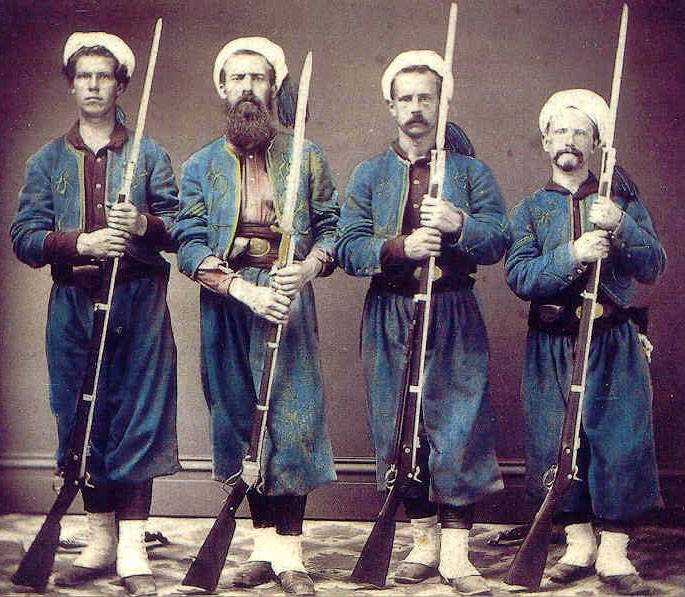
American Zouaves, 1863 photograph
The Americans also tried to adopt the French experience. The initiator of the creation of the Zuava units was a certain Elmer Ellsworth, a clerk from the Illinois Patent Office, who had nothing to do with the army and service in it, but liked to read books and magazines on military subjects at his leisure. From them he learned about the French Zouaves. It would seem that from interest and desire to the actual realization of what was conceived in life - the distance is enormous, and Ellsworth does not have and cannot have any chance of becoming the founding father of the American Zouave corps. But the young man had an ace up his sleeve - a close acquaintance with Abraham Lincoln, who had not yet been president, but had already gained great fame in the country both as a politician and as a lawyer (one of the most respected in Illinois). Already becoming president (in 1860), Lincoln called Ellsworth “the greatest little man”: he was referring to the growth of his friend, 5 feet 6 inches (168 cm). By the way, during the Senate elections of 1858 (which he lost), Lincoln himself was called by the adversaries “a big dipper” (and his short rival - “a little giant).
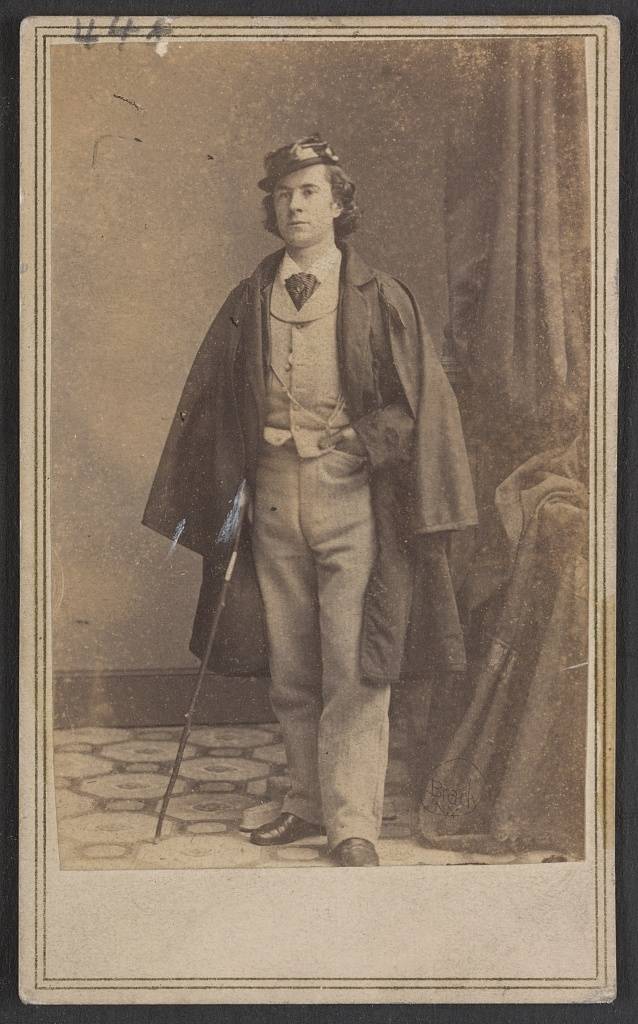
Elmer Ellsworth Photo from the Library of Congress
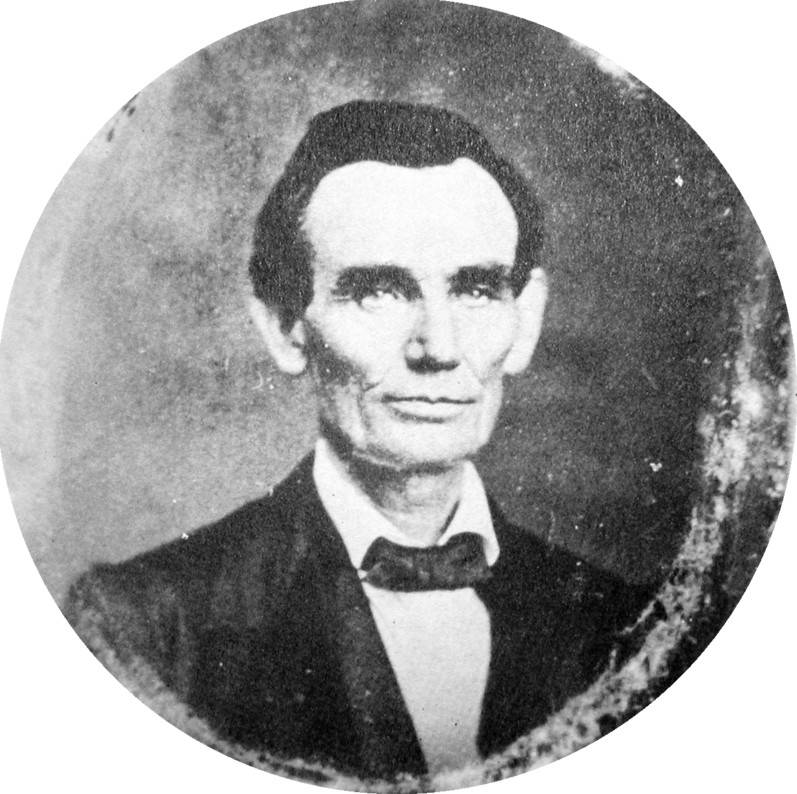
Abraham Lincoln, 1857
The second factor of success was the turbulent time of the Civil War in the United States, when luck sometimes smiled at such amateurs and adventurers. And a few cadre military could even hope for a fantastic career growth. So, Major Irwin MacDowell, who never commanded a single military unit, after the outbreak of the Civil War, was immediately promoted to Brigadier General and appointed Army Commander of Northeast Virginia. This army under his command lost the first major battle of the war - at the Bull Run River.
But back to Ellsworth.
In 1857 (at the age of 20), he became a drill instructor at Gray Rockford, the police station in Rockford, Illinois. In 1859, the father of his betrothed Carrie Spafford demanded that the daughter of the groom stop playing the fool and find a more suitable job. Ellsworth moved to the city of Springfield, where he joined the Lincoln Law Office.
In 1859, with the help of Lincoln, 22-year-old Ellsworth received the post of Colonel of the National Guard in Chicago. The title was loud (they were always loved in the USA), but this “fake” colonel had only 50 subordinates. But the opportunity arose to dress them in uniforms a la zouave and to drill according to the methods read in the French magazine: as they say, whatever the child was amusing, if only he would not cry. Ellsworth’s consultant was former French military doctor Charles de Villiers, who served in one of the Zuava regiments during the Crimean War.
It is hard to say how it would all end if it were not for the far-reaching incident at Fort Sumter.
Fort Sumter was built after the so-called Second War of Independence (the Anglo-American War of 1812-1815) to protect the port city of Charleston (South Carolina). After winning the Lincoln presidential election in November 1860, seven southern states announced their withdrawal from the United States (and in February 1861, the constitutional congress in Montgomery proclaimed the creation of a new state - the Confederate States of America, whose capital was Richmond). Fort Sumter found himself in confederate-controlled territory, but on December 26, federal troops took control of it. On April 26, 1861, the southerners began an operation to seize the fort. The warriors on both sides were still the same: despite the 36-hour artillery “duel”, neither the Confederates nor the federals managed to kill anyone.
Nevertheless, the nerves of Major Robert Anderson, who was in the fort, could not stand it, and on April 13 he passed the fort. So began the American Civil War.
The new president, Lincoln, announced to the nation that the country needed 75 volunteers, and the enthusiastic Ellsworth went to New York, where he created the first (already real, if only in number) regiment of American zouaves, which, in fact, was officially called the 11th New York Infantry. Since it mainly included employees of the New York fire brigade, most of whom were also red-haired Irish, the compound was unofficially called the “First New York Fire Zouaves”. Another, also unofficial, name for this regiment is Ellsworth's Zouaves.
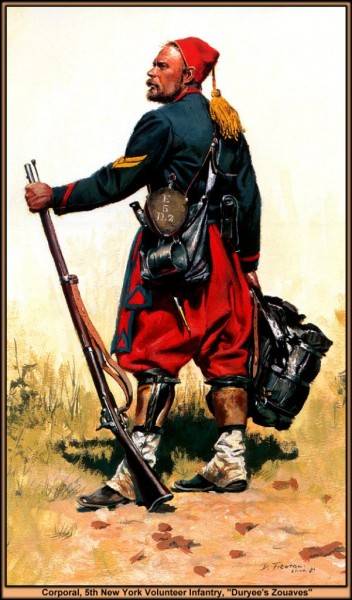
Don Troiani. Fire Zuav
This regiment was included in the American army on May 7, 1861, after which it was transferred to Washington.
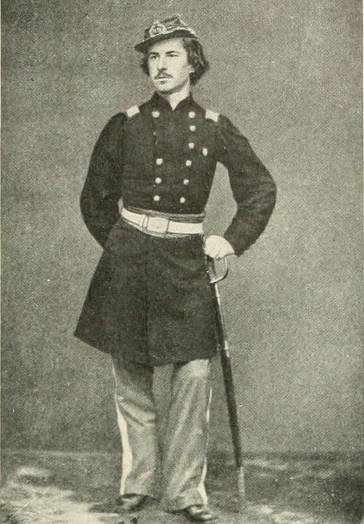
Colonel Elmer Ellsworth in 1861
The career of “Colonel” Ellsworth was bright, but short, because, as it turned out, the real war is too much different from “role-playing games”.
On May 23, 1861, a referendum was held in Virginia on the separation of this state from the United States, and already on the 24th the New York zouaves received orders to seize the border city of Alexandria. Ellsworth did not even have time to participate in any battle: the young man was killed by a certain James Jackson, from the roof of the hotel of which he tore the flag of the Confederacy.
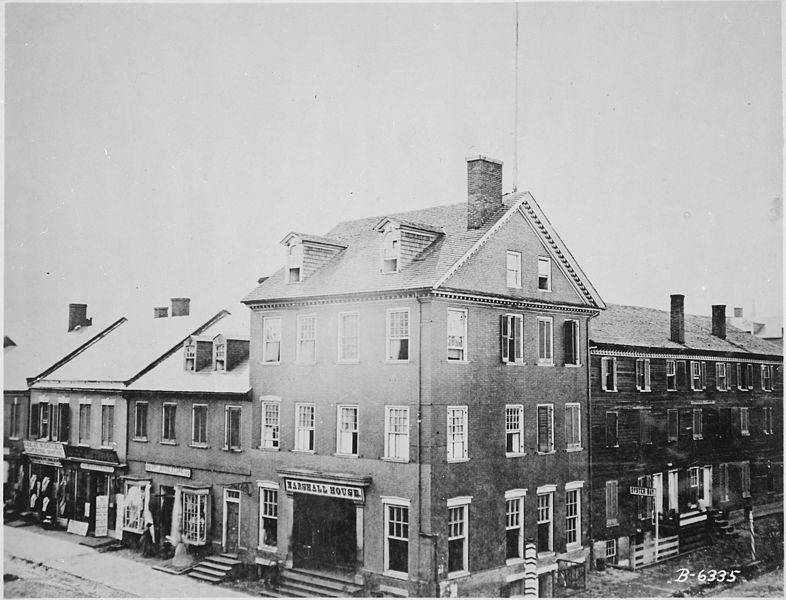
The Marshall House in Alexandria: a hotel from whose roof the flag of Elmer Ellsworth tore
In this engraving of 1861, we see Jackson shooting at Ellsworth, and the Zouave, Francis Browell, in turn, kills Jackson (for which he was awarded the Order of Honor):
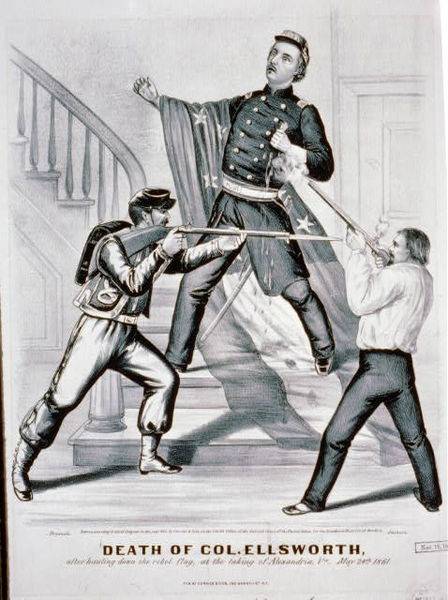
And this scene is depicted on a mail envelope:
Francis Brownell. The photo is stored in the library of the US Congress:
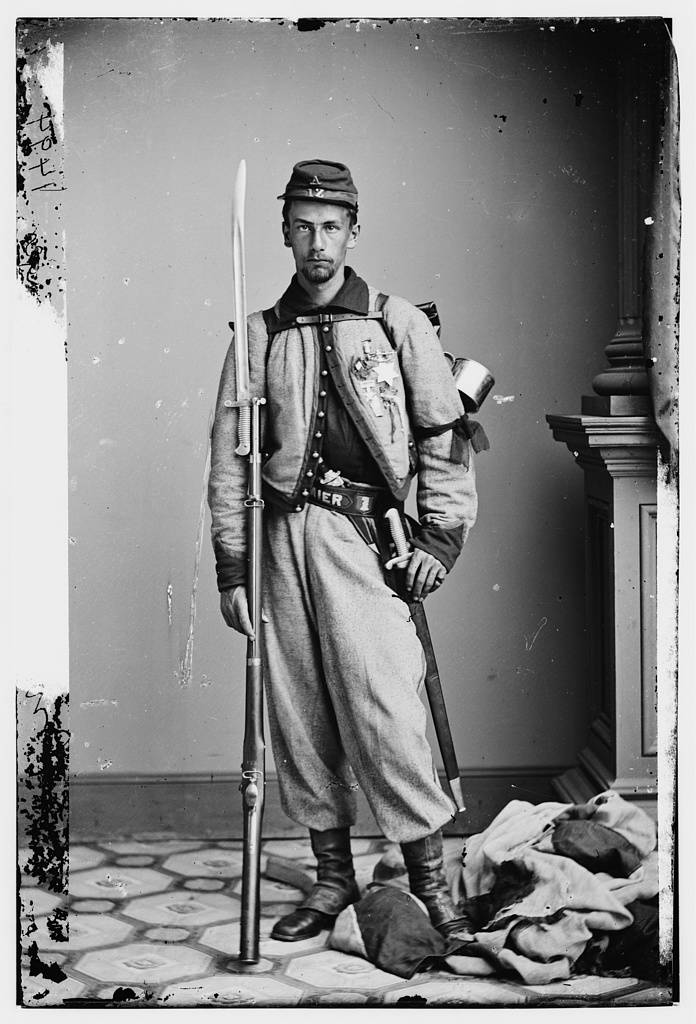
So 24-year-old Elmer Ellsworth entered history as the first Union Army officer to die in the Civil War. Some of his Zouavas embroidered an inscription on their faces: “We will avenge the death of Ellsworth!”
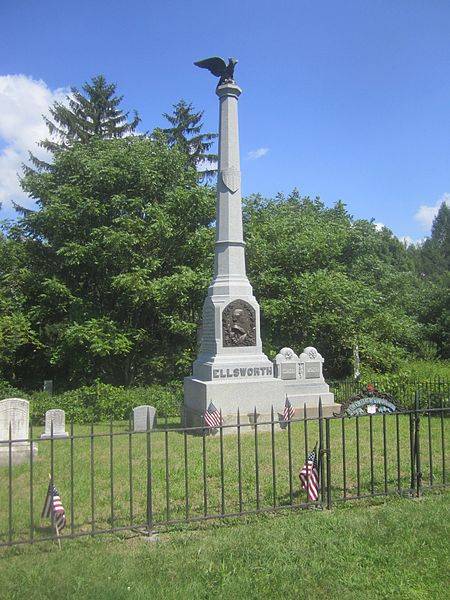
In 2017, the Marshall House building was acquired by the transnational company Marriott International, which rebuilt it by opening the Monaco Hotel in it:
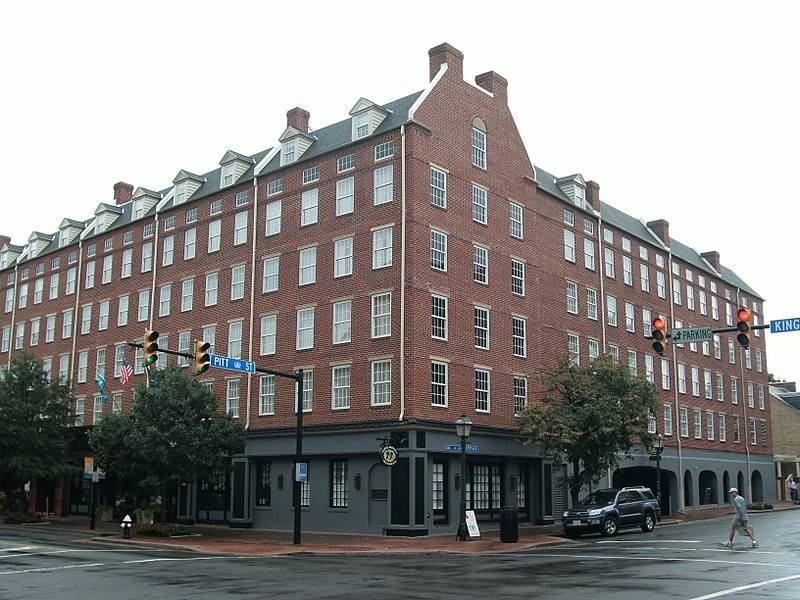
Hotel Monaco
The flag captured at this hotel was initially kept by Lincoln: according to contemporaries, his son often played with him. After the assassination of the president, Brownell took the flag, whose widow sold two fragments of the cloth in 1894 at a price of $ 10 and $ 15. The remaining canvas is also divided into two parts, the first of which is stored in the New York War Museum, the second in the National Museum of American History.
Fate, perhaps, was even merciful to Ellsworth: he did not have to see the shame of his Zouaves in the battle of the Bull Run River, which took place on July 21, 1861.
Colonel Heinzelman reported on the participation of the “fire zuavs” in the battle:
During their escape, the recruits of the deceased Ellsworth stumbled upon two companies of the 1st Virgin Cavalry Regiment, led by its commander, Lt. Col. Jab (James) Stuart (who, incidentally, was also very young - only 28 years old).
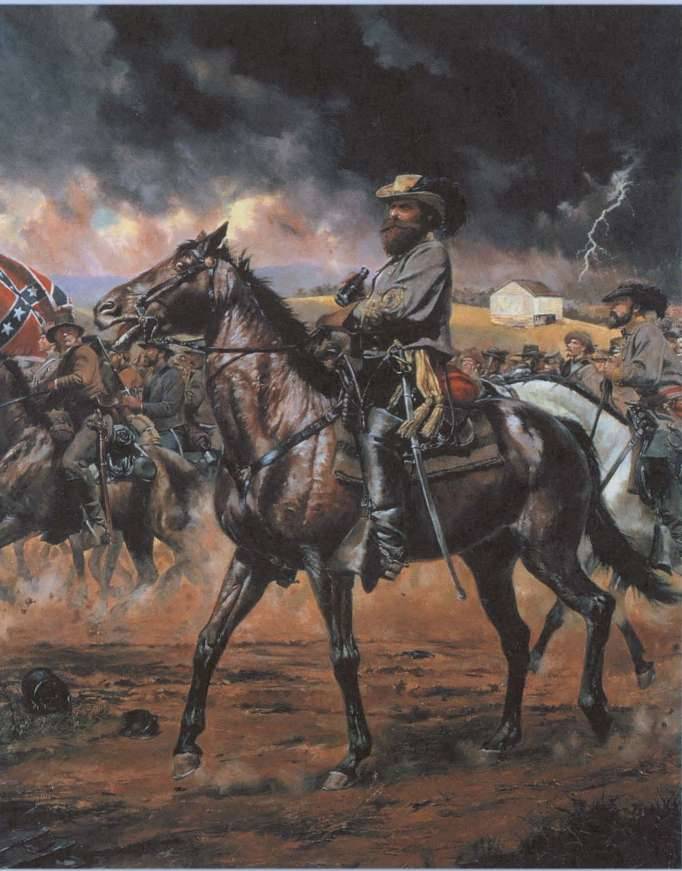
This is how we see Jab Stewart in the picture of the American artist Don Troiani: with a French saber, on a bay horse named Virginia
Stewart knew that the Southerners' army also included a Zuava battalion (the “Louisiana Tigers,” which we are talking about), and therefore decided to encourage the panicked "comrades-in-arms" - confidently addressed them:
The guys stopped and perked up, but in vain: Stuart already saw their flag and gave the cavalry a signal to attack.
The Virgin Regiment lieutenant William Blackford recalled:
The already quoted Colonel Heinzelman dryly states:
It is estimated that in the 20 minutes spent on the battlefield, the “fire zuavs” lost 177 people: 2 officers and 34 privates were killed, 73 people were injured, 68 were captured or missing. They suffered the most damage from the attack of the Stewart cavalrymen.
On June 2, 1862, this compound was disbanded.
However, then in the army of the northerners more than 70 volunteer regiments of zouaves were created, but the reason for their formation was already quite prosaic: the fact is that, lacking military uniforms, the US government purchased a military uniform in France. And this should have happened - the cheapest sets turned out to be Zouavian. Well, since the recruits were given the form of zouaves, then why should they not be called zouaves?
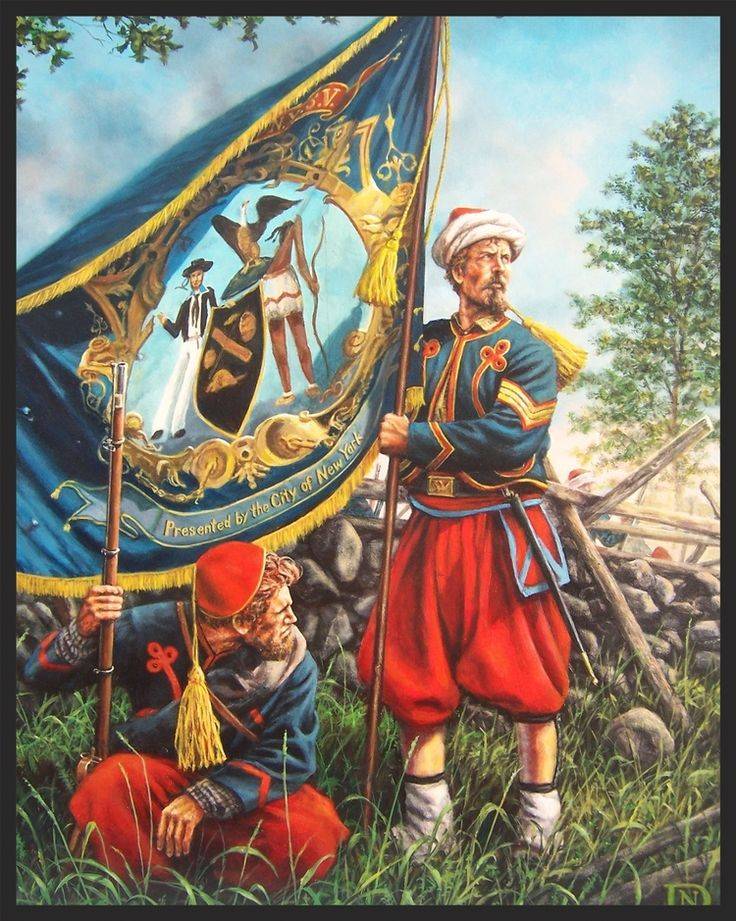
5th New York Zouaves
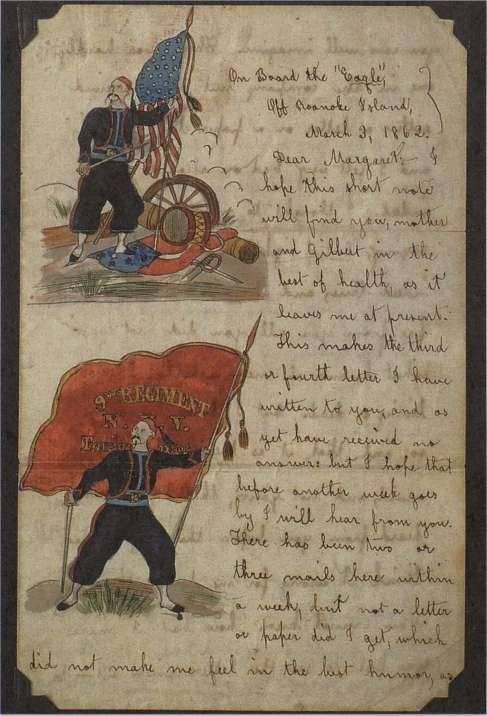
A letter with drawings written by one of the Zouaves of Colonel Rash Hawkins
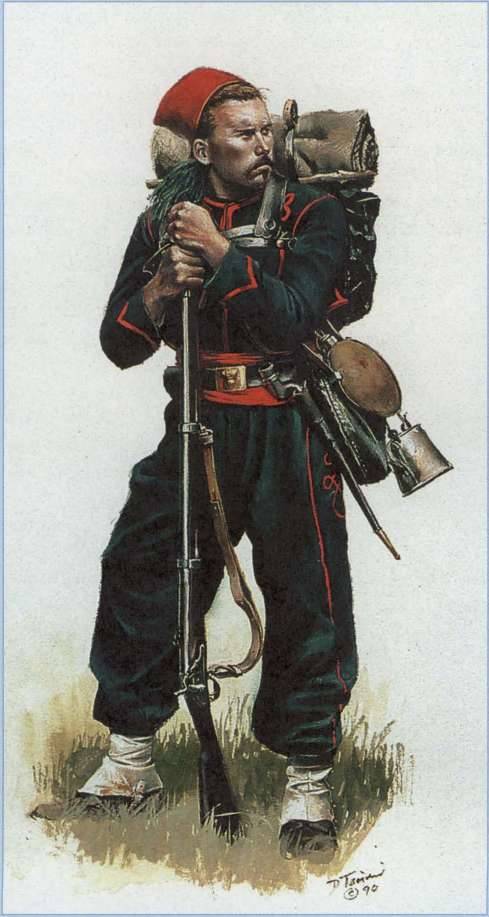
Zuav Hawkins, 9th New York Volunteer Infantry Regiment
These new zouaves fought no worse than other combat units of the northerners.
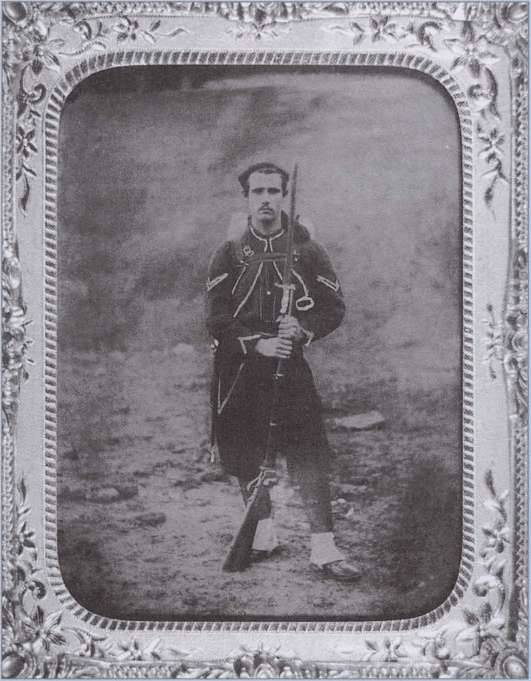
Corporal Zuav with a Sharps rifle at the earthen rampart of Fort Federal Hill, Baltimore
The Confederates formed 25 mouths of Zouaves, and here was a completely different story. The romantically-minded young southerners were very impressed with the play “The Bloody Drama of the Crimean War”, which was just at that time that the popular theater troupe, touring in their states, gave. And they followed in the footsteps of the unfortunate Ellsworth and his "fiery zuavs."
The most famous in this war was the 1st Louisiana Special Battalion, whose servicemen were called the "Louisiana Tigers" (sometimes the "Tiger Rifles" - tiger rifles).
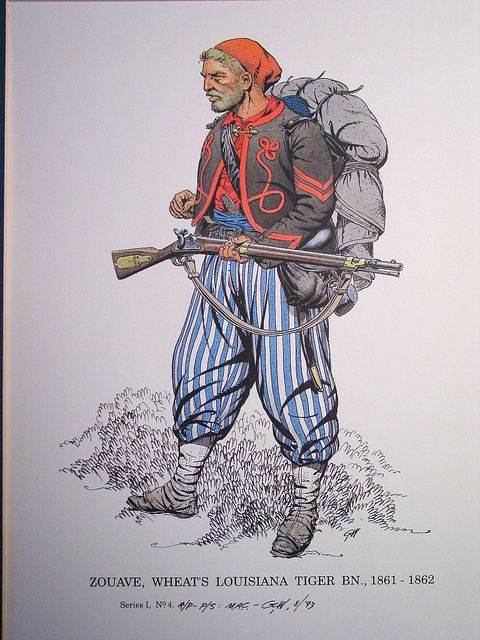
Tiger Rifles Battalion Soldier
This battalion, commanded by Cheath Robordo Whit, consisted of 5 companies and was formed on the principle of the French Foreign Legion: soldiers were recruited from foreigners and criminals of various kinds. So they were zouaves only because they wore the appropriate form, and it would be more correct to call them legionaries. And again, among the "Louisiana Tigers" there were many Irish immigrants.
The "Louisiana Tigers" fought well: in the Shenandoah Valley, at the battles of Fort Royal, Winchester and Port Republic. But they also “had a good rest”: they ravaged the saloons, smashed the brothels. Besides the fact that, in their opinion, “it is bad”, they also, as a rule, did not pass. One of the Confederate soldiers later recalled:
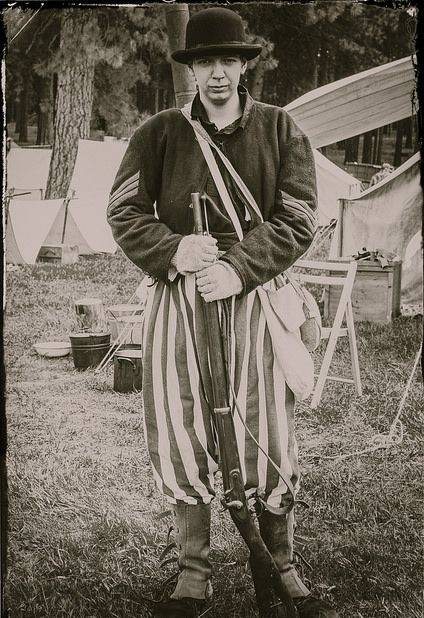
One of the "Louisiana Tigers"
During one of these "outrages" in the town of Montgomery, several "tigers" were even shot.
This battalion suffered heavy losses during the North Virginia and Maryland fighting campaigns, and during the battle of Entityam was almost destroyed. But the name remains - it was transferred to the Louisiana brigade of General Harry Hayes.
After the end of the Civil War, one Zouave battalion became part of the National Guard, performing mainly ceremonial functions. But in 1880, the uniform of the national guards was unified, along with it the name also left the history.
Polish "zouaves of death"
On January 10 (22), 1863, another anti-Russian uprising began in Poland. On January 11, the Provisional National Government was formed, Ludvek Meroslovsky, who arrived from Paris on 19th, became the “dictator of the rebellion. Around this time, a certain French officer named Francois Roshanbrun appeared here, the owner of a fencing school in Krakow, which belonged to Austria-Hungary. In the city of Oytsovo, he formed a detachment, which he gave the loud name “Zuava of Death” (in fact, the Poles pronounce the word “zuav” as “zuav”) - because he forced the recruits to swear never to back down and not give up. In this detachment there were quite a lot of students of the Jagiellonian University.
By the way, on the basis of the march of these “Zhuavs” a revolutionary song was later written “Varshavyanka 1905” (“Hostile whirlwinds blow over us”). There is also the Varshavyanka of 1831. And then this “Varshavyanka” was transformed into the song of the Spanish anarchists “A las Barricadas!” (“To the barricades”):
nubes oscuras nos impiden ver;
aunque nos espere el dolor y la muerte
contra el enemigo nos llama el deber.
..........................................
¡A las barricadas, a las barricadas
por el triunfo de la confederación!
¡A las barricadas, a las barricadas
por el triunfo de la confederación!
Try translating yourself (in an online translator) if you wish.
In Poland, it is often said that the only phrase de Rochebrune could say in the language of his subordinates was “psiakrew ktra godzina ?!”: something like “damn it, what time is it ?!” Allegedly, it was she who became his battle cry.
From the French and American zouaves, “in fashion” which had bright saturated colors, the Polish were distinguished by the black color of the form and the white cross painted on their chest.
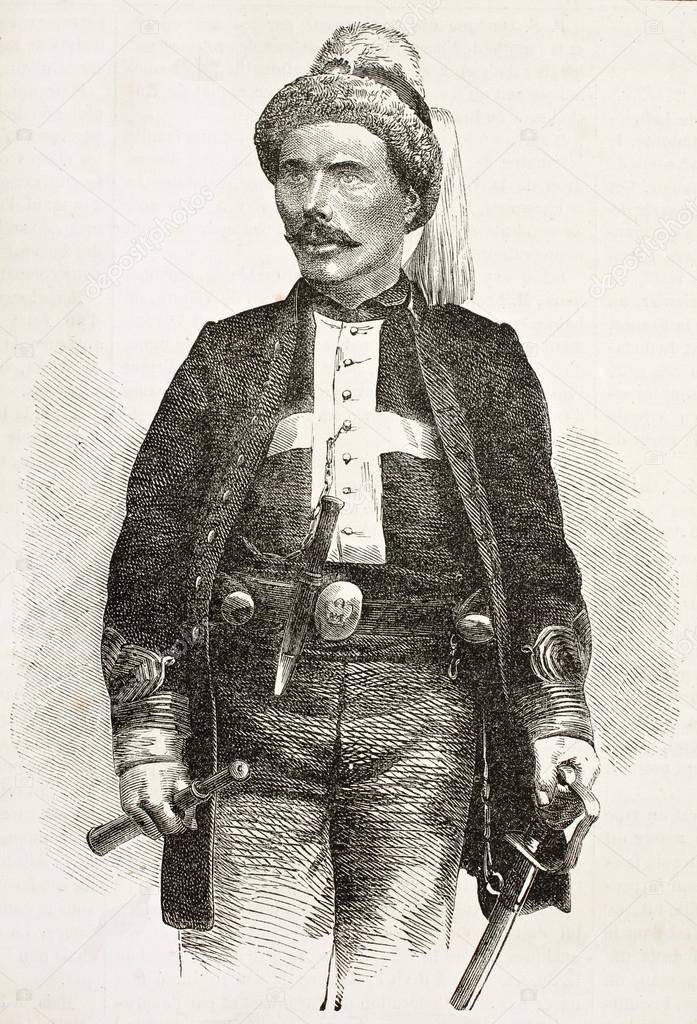
Portrait of Francois (Franceschek) de Rochebrune in the form of the Zuava of Death, 1863, engraving of the XNUMXth century
The first battle of Roshbrune’s fighters against the Russian troops ended as expected: on February 17, near Mekhov’s 150 “zuavs of death” went to the cemetery (the real cemetery), where the Russian positions were. Less than 20 of them returned back. Killed and Lieutenant Wojciech Komarovsky, who led this attack.
Roshbrun was not sorry for the Polish youths, and therefore, reaching Krakow, he announced the creation of an entire regiment of suicides. But only a battalion was recruited - about 400 people. On March 17, the new “death zuaves” successfully fought with the Russian dragoons, but the very next day they were surrounded by the people they left, suffering heavy losses. Frustrated, Rochebrune went to France, and the last “Juoes” of his battalion were killed in early May 1863. Rochebrune later also died: as part of the French army during the Franco-Prussian War. In general, everyone died, as promised.
Brazilian Zouaves
In distant Brazil, in 1864, their zouaves also appeared - the so-called battalion of Zuavs-Baiyans (from the name of the province). During the military operations against Paraguay, it was formed from captured runaway slaves who were offered a simple and gloomy alternative: to die on the gallows immediately or in battle, but a little later. Like Comrade Sukhov from The White Sun of the Desert, they chose to "suffer a little." They say that among them there were many “masters” of the now popular, but forbidden at that time capoeira (the word was invented by the Portuguese colonialists, the slaves themselves called their art “Congo”, “Angola”, “Manjing” or “Sau-bento”, at the beginning of the XNUMXth century - wadiiasau).
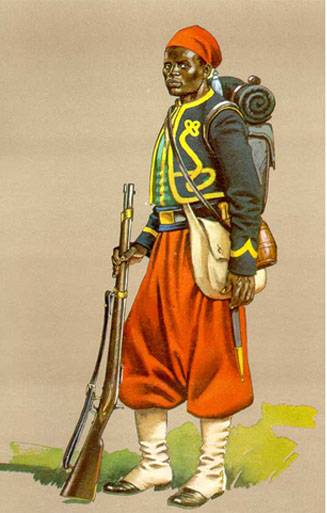
Brazilian Zuav Bahian
Among the achievements of the Brazilian zouaves is the capture of the Paraguayan fort of Kuruzu.
Papal zuavas
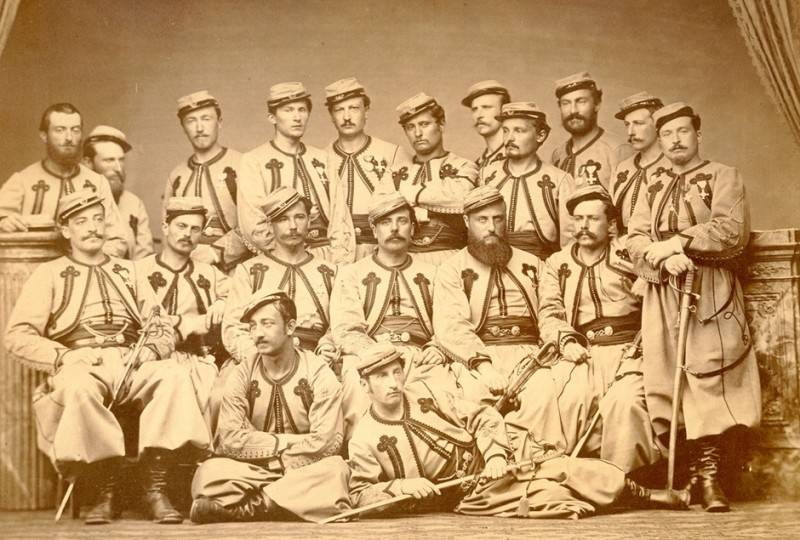
For 10 years, the papal region and pontiff Pius IX was guarded by a regiment of zouaves, which the French general Louis de Lamorisiere formed from Orthodox Catholics from different countries (at first as a tyraller, that is, a rifleman).
On November 3, 1867, near the village of Mentany, this regiment, among other detachments of the papal region in alliance with the French military units, fought against volunteers Giuseppe Garibaldi, who were forced to withdraw with heavy losses.
It is curious that in 1860 Garibaldi himself had a battalion of volunteers, which they called the "Calabrian Zouaves."
In 1868, 4 people were in the regiment of papal zouaves. Among them were 592 immigrants from Holland, 1910 from France, 1301 Belgians, 686 Italians from the papal proper and 157 immigrants from other regions, 32 Canadians, 135 Irish, 101 Prussians and 87 Germans from other regions of Germany, 22 English, 50 Spanish , 32 Swiss, 19 Americans, 14 Poles, 12 Scots, 10 Austrians, 7 Portuguese, 6 Maltese, 3 subjects of the Russian Empire, one each from India, Mexico, Peru, some islands of the South Seas, and even one African and a Circassian . That is, again, this regiment, although it was called Zuava, was a typical legionnaire.
The military uniform of the papal soldiers copied the French, differing only in color: gray uniforms with red trim. Caps were initially used as a headgear, but they were soon replaced by traditional zuavas fez.
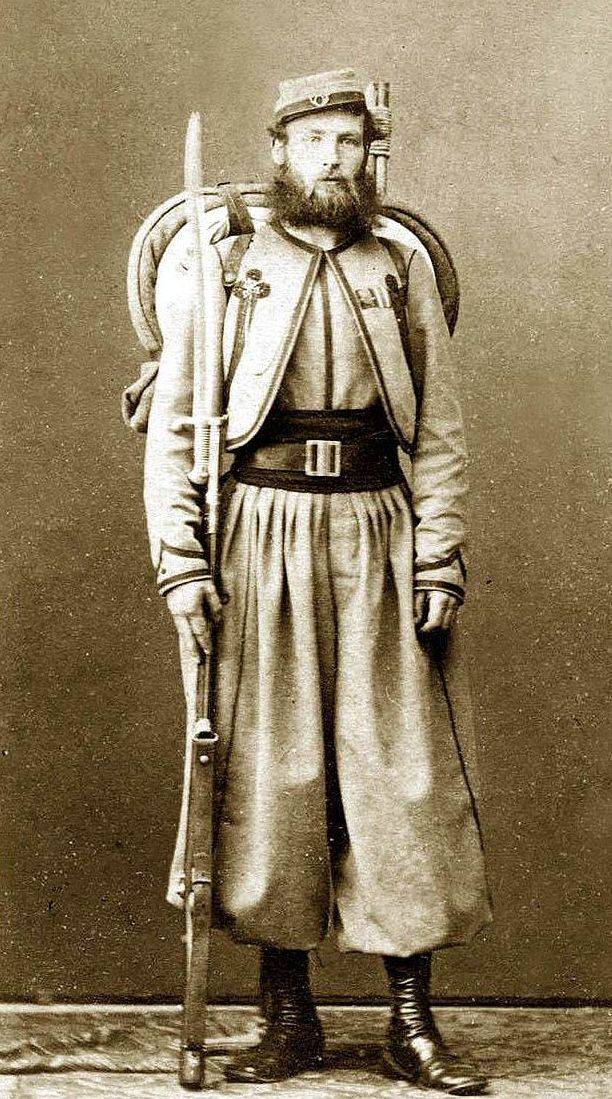
Papal zuav
In 1870, when Rome was occupied by the troops of Victor Emanuel II (the first king of united Italy), this regiment of zouaves moved to France, and after the unsuccessful Franco-Prussian war was disbanded.
Other zouaves
During the Third Carlist War (1872-1876, in some sources it is called the Second), a Zouave company was also created in Spain, which was used as an honor guard for the candidate for the throne of Don Carlos the Younger.
Between 1880 and 1908 two regiments of zouaves were created in the Ottoman Empire: they were included in the Sultan Guard. There were no military exploits behind them, after the coup organized by the Young Turks in 1908, these regiments were disbanded.
In 1856, the British West Indies Regiment also received the form of zouaves. Currently, this uniform is worn by musicians from the military band of Barbados and Jamaica.
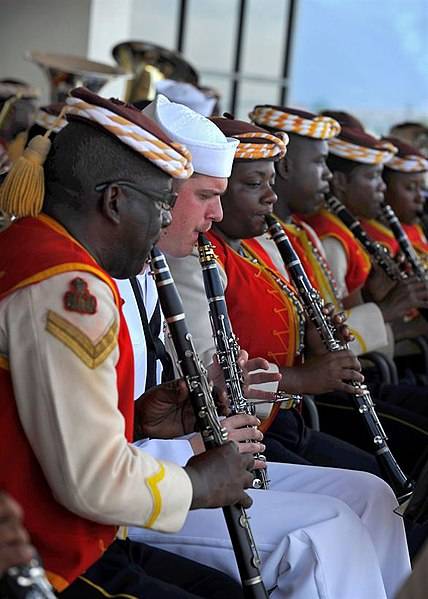
Musicians of the military band of Barbados and Jamaica in Zuava uniform
But in France, soldiers in the form of zouaves can no longer be seen: cadets of the commando military school used to dress like this, but they also changed uniforms in 2006.
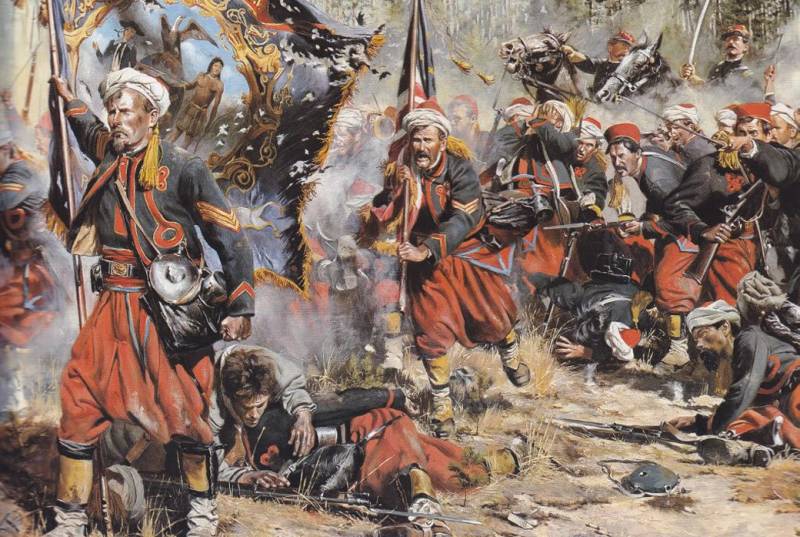
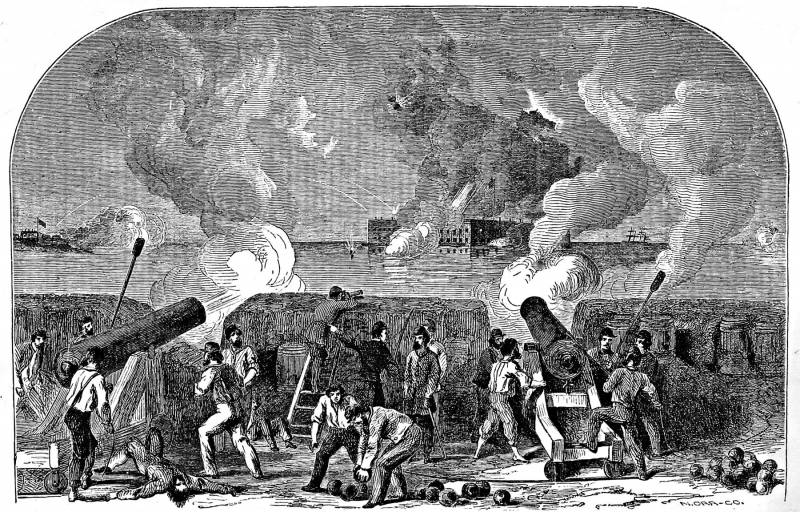
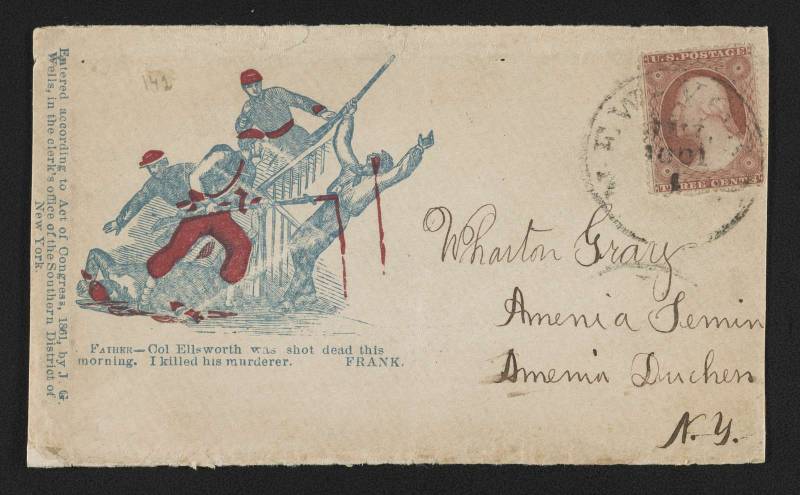
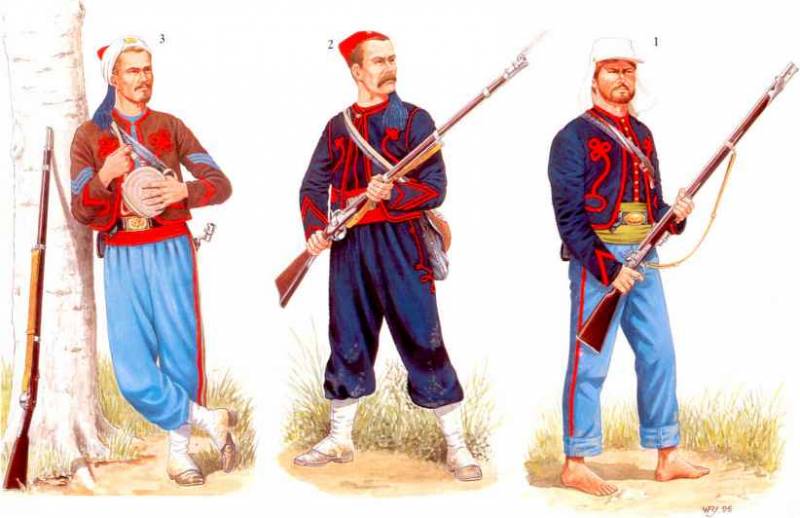
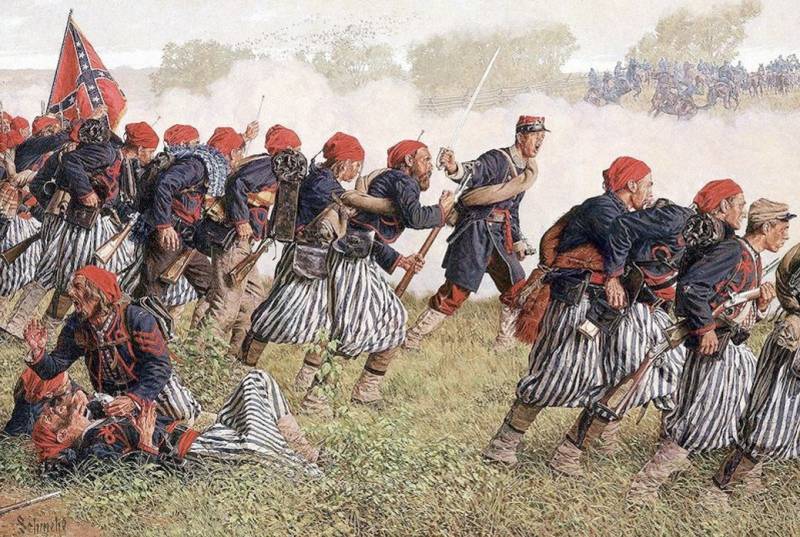
Information